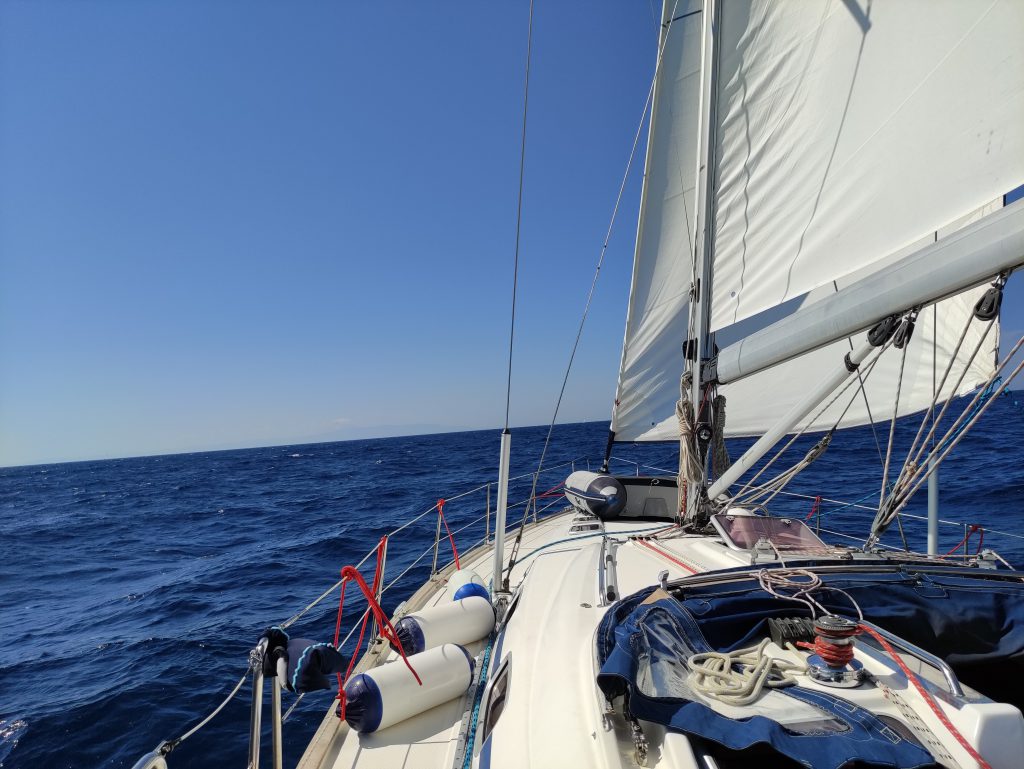Why learning goals create orientation

Photo: Margret Steixner
Welcome back from the summer break. Which travel destination did you choose? The local mountains and lakes or did the sea call to you, as it did to me? Wherever the destination was, it was certainly formative for your entire holiday planning. The same goes for learning goals.
By defining the point we want to reach at the end of a seminar or a course, we get an essential orientation point that goes beyond defining learning content and provides essential reference points for seminar planning and implementation. Why it makes sense to think carefully about learning objectives and how to ideally formulate them is what this blog post is all about.
„The slowest person who does not lose sight of his goal still walks more swiftly than the one who wanders without a goal,“ writes Gotthold Ephraim Lessing.

Goals have the function of marking an end point that we want to reach. In educational processes, learning objectives describe what learners should be able to do at the end. They thus define the competences that are expanded and built up in a learning process. This does not come about through the mere consumption of learning content. Competence includes not only knowledge but also the skills and abilities that learners develop by applying what they have learned and integrating it into their body of knowledge and experience.
In many educational events, the content to be imparted is the central focus of planning and seminar implementation. This orientation bears the risk that learning processes remain strongly oriented towards the person teaching, who in most cases conveys the content. In trade union adult education, however, we are primarily interested in the learning outcomes – in other words:
What should the shop stewards or functionaries be able to do in the end in order to be successful in their area of work?
Ralf Arnold sums up the difference between knowledge and competence orientation when he says: „We can distinguish between input-oriented and output-oriented teaching.“ Input-oriented education is primarily concerned with what and how much knowledge can be drilled into learners. The output orientation, which has a long tradition especially in adult education, sets the question of ability – i.e. competence – as the end point.
If we deal with the topic of competence, we usually quickly come across a model that Benjamin Bloom developed as early as 1956 and that was later taken up and further developed by other scholars. Bloom’s basic idea is recognisable in almost all competence models: He understands his taxonomy levels as a classification system in which the different forms of competences are described.
Clarity about which level of competence learners should achieve in relation to a particular topic provides essential guidance in setting learning objectives. However, the competence levels also help us in methodological planning and implementation. A look at the verbs used in the taxonomy model provides information about the desired level of competence. Roughly speaking, we can assume that the lower competence levels can already be achieved through lectures or presentations, but the higher ones can only be achieved through a comprehensive learning process that includes applying, discussing and testing in addition to theoretical teaching. In #dimi_11 I describe how a learning process must be structured in order to sustainably anchor knowledge.
What does this mean in practical terms?
You may be wondering how learning objectives are written and how they differ from learning content. Let’s look at a specific example. The following learning objectives are taken from the REFAK seminar description: „Building counter power“ and read as follows:
The participants
• understand why the ÖGB is increasingly addressing the issue of „counter power“
• know theories and models of trade union counter power, their sources, resources and strategic possibilities
• are able to better understand the target groups of trade union education with their concerns, perspectives and areas of tension on the „playing field of power“
• are able to make use of the theories and models taught for training design and sensitise participants to the related fields of action, system logics and rules of the game
• know tools for self-reflection that help works council members to recognise their own position in the power structure of the company
• can guide shop stewards in identifying, analysing and assessing the power resources that can be activated for them, so that they can then incorporate them into a good and effective strategy for fighting for their interests.
Defining learning objectives
The learning objectives of „Building counter power“ offer good starting points for the general phrasing of learning objectives. What do you notice when you read them? What tips can we derive from them that might be helpful in drafting learning objectives for your seminar?
First, it stands out that when we talk about learning objectives, we are actually describing learning outcomes. There is an extensive academic debate on the distinction between learning objectives and learning outcomes, which I will not go into here. What is important for us to note is that we describe learning objectives from the perspective of the intended learning outcomes. Those who are interested in more detail can dig deeper here.
For our guidance:
In general, the following should be considered when setting learning objectives:
- Describe the learning objectives from the perspective of the completed learning process, i.e. what knowledge, skills and abilities should the learners possess.
- Describe the learning objectives from the learner’s perspective (= learner orientation).
- The extent of the learning objectives should be adapted to the target group – neither too many nor too few. Often we define the learning objectives quite generally in the seminar announcement and then break them down into smaller sub-objectives in the planning (see #dimi_05).
- Learning outcomes should ideally be observable and externally verifiable. It must be said here that this requirement can be met differently depending on the type of learning objectives. For example, a business competency such as reading a balance sheet is easier to verify than a negotiation or conflict competency. However, these different types of competences may be aimed at in the same seminar – often it makes sense to define a combination of
- cognitive (learners know different models for …)
- affective (learners are aware of the importance of their own motivation and can communicate this in a targeted way…) and
- social learning goals (learners recognise areas of tension…).
In addition to these general hints, there are also some practical tips on how to formulate them, which are easier to describe and implement:
- the learners are the subject
- use active verbs / time words, as these describe the action involved in learning
- use verbs words that describe the learning objective in a concrete and clear way (e.g. „know“, „can“ or „apply“, „master“ and „pass on“)
- describe what the skill refers to. It may be helpful to use the word „INDEM“ to describe the condition by which the learning objective is to be achieved.
You can find good handouts and wording guides here.
Learning objectives are an essential criterion for success and a quality feature. They not only help us to reflect on how relevant the learning content is to the activities of our target group, but also hold much greater potential. If we ourselves are clear about the goals we want to achieve in the seminar, we can communicate them much better to the learners. This helps learners to better grasp the meaning of a learning unit and to align it with their own learning objectives. Finally, learning objectives also help us to evaluate learning outcomes.
After all, how else can we know at the end whether we have achieved the goal or whether the seminar was a trip into the blue?
That can also be wonderful on holiday…
For further reading:
- Dehnbostel, Peter (2011): Qualifikationsrahmen: Lernergebnis und Outcomeorientierung zwischen Bildung und Ökonomie. In: Magazin für Erwachsenenbildung (14). Available online, last access on August 25, 2021
- Lehner, Martin (2019): Didaktik. 1st edition (UTB
- Taxonomiestufen nach Bloom
- Podcast potentiaLLL: Nachhaltigkeit, Kompetenz und Proefessionalisierung- ein Gespräch mit Ralf Arnold
- Solidarität als Lernziel der gewerkschaftlichen Bildungsarbeit.
- Wissensbaustein zu Lernziele und Lernergebnisse
- Didactic handouts – Formulieren von Lernzielen
The above-mentioned (and other) books can be ordered free of charge from the ÖGB-Verlag webshop HERE.
Author: Margret Steixner
Lust auf mehr? Zu allen Beiträgen der Serie kommst du HIER!

Dieses Werk ist lizenziert unter einer Creative Commons Namensnennung-NichtKommerziell-Weitergabe unter gleichen Bedingungen unter gleichen Bedingungen 3.0 Österreich Lizenz.
Volltext der Lizenz

Dieses Werk ist lizenziert unter einer Creative Commons Namensnennung-NichtKommerziell-Weitergabe unter gleichen Bedingungen unter gleichen Bedingungen 3.0 Österreich Lizenz.
Volltext der Lizenz


